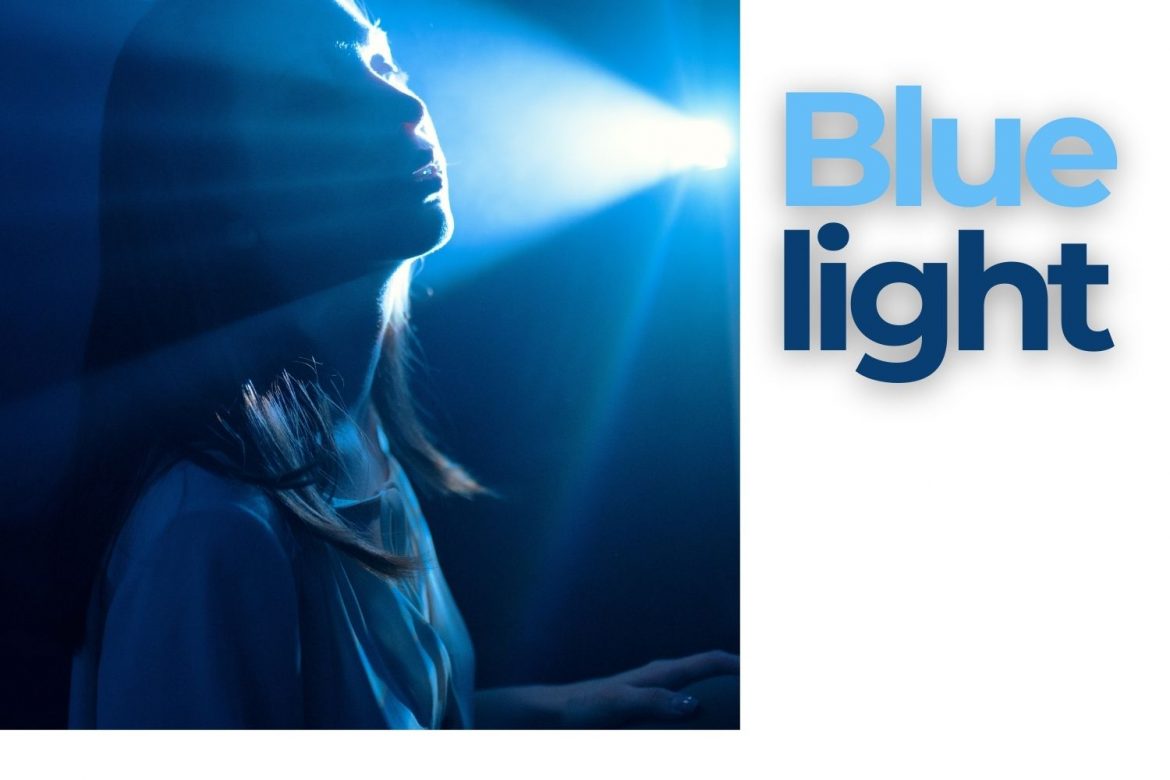
A lot of information on blue light and blue light glasses can be found online, but what do we really know about its effect on the eyes? We know medicine is ever-changing and new study data forces us to change our understanding and conclusions. Blue light is still being studied by researchers. Here’s what we know in now.
Why is exposure to blue light believed to cause eye problems? As high-energy blue light passes through the front of the eye, the cornea, through the lens, and to the retina, it could be a contributing factor to dry eye, cataracts, and age-related macular degeneration. It could even impact brain function. Some data suggests that it inhibits melatonin secretion, and adrenal gland hormone production which affects your hormone balance and therefore, your systemic health and sleep quality.
Cataract
We know that UV light from the sun is the main factor for the development of cataracts over your lifetime. Cataracts develop when UV light alters the lens inside the eye. The lens is the structure between the cornea and retina. Though many types of cataracts exist, the most common types, nuclear sclerosis and cortical, lead to light scatter and blurred vision after years of UV exposure.
Blue light is near to UV light on the spectrum and the sun emits blue light along with UV light. Blue light has short, high-energy waves, and they are slightly longer and less powerful than UV waves. They cannot be seen with the naked eye. Researchers found blue light wavelengths can cause cataract development in pig eyes; however, most studies fail to address blue light exposure time. Does it require minutes, days, hours, decades, or a lifetime of exposure?
Retina
The claim that blue light glasses have a protective effect on the retina has always been questionable. Does blue light contribute to the development or progression of macular degeneration? If so, what range of blue light?
Many in vivo studies in mice and in vitro studies show that long-term blue light (400–500 nm) causes excessive oxidative stress and severe damage to retinal tissues, especially the RPE cells of the retina with the most harmful effects at blue light wavelengths of 440 nm. The activity and high volume of oxygen used in the retina can make the retina vulnerable to damage that could result in pathological changes related to age-related macular degeneration (ARMD).
Several studies have been conducted to determine the effects of a blue-light filtering intraocular lens (IOL) inserted in the eye during cataract surgery and how the lens affects the development of ARMD. Researchers reported that the IOL did little to reduce the incidence of developing late-stage ARMD at three years of follow-up, or any stage of ARMD at one year of follow-up. The practice of using a blue-light lens for cataract surgery has since been discontinued.
While studies do show blue light has the potential to damage the retina, the toxic effect depends on wavelength, intensity, and duration of exposure to the light. There are no international standards for safe blue light exposure to prevent ocular damage and the effect is also difficult to assess since an individual exposure to blue light varies significantly, making each patient’s risk assessment difficult.
Glaucoma
The effect of blue light on the optic nerve has not been studied as thoroughly as the effect on the retina. The development of glaucoma, just like other diseases, is multifactorial. Genetics and the environment are both contributing factors. We know blue light causes the death of the mitochondria in the ganglion cells of the retina resulting in optic nerve damage. It is possible blue light could be a factor in glaucoma development, progression, or both. Again, the question remains, how much blue light, what wavelengths, and what time duration?
Digital eye strain
Many eyeglass lens companies have published informal papers linking digital eye strain to blue light exposure. Many digital device users complain of eye fatigue, headaches, and blurred vision and their eye doctors may prescribe blue-blocking lenses with the hope it will address their end-of-day symptoms. Like other eye conditions, we know digital eye strain is caused by many factors including reduced blinking, dry eye issues, and an uncorrected prescription.
In a very recent study, researchers had participants perform two reading tasks on the computer with and without the blue light filters, measured their eye muscle activity, and asked them about their visual symptoms. The report concluded that blue light blocking lenses did not improve the signs and symptoms of digital eye strain.
Systemic health
We know that blue light stimulates the secretion of melatonin in the pineal gland which regulates cortisol expression and regulates human circadian rhythm. Many studies have demonstrated blue light can regulate the body clock and promote alertness, memory, and cognition. If blue light exposure is excessive, it may stimulate the brain and affect sleep quality. While all types of light can suppress melatonin, blue light has been found to shift circadian rhythm by twice as much (3 h) as green light (1.5 h).
Several studies indicate the benefits of blue light filtering displays on smartphones on melatonin levels/sleep suppression and dry eye, while others have shown no beneficial effect on either melatonin levels or sleep outcomes with the use of ‘night shift’ technology. Screen brightness may have more effect than blue light on melatonin suppression.
Melatonin dysfunction is thought to be a potential factor in the development of type 2 diabetes, immune responses, cancer, and blood pressure. The suppression of melatonin at night could lead to other negative health conditions. Exposure to blue light during the daytime may have a positive effect whereas exposure during the early evening or night may negatively affect the circadian system and sleep.
While there is a lot of marketing and communication regarding blue light and spectacle lenses, most of it is not evidence-based. The truth is the verdict is still out on the effects of blue light.

